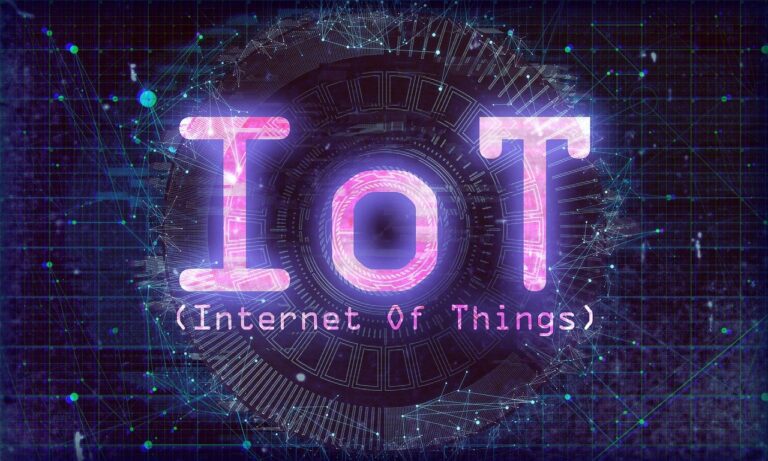Telemedicine Software: Bridging the Gap in Healthcare Access
Table of Contents
The advancement of technology has not only transformed various industries but has also brought significant changes to the healthcare sector. One such transformation is seen in the emergence of telemedicine software, which plays a pivotal role in bridging the gap in healthcare access. Access to quality healthcare services is a challenge faced by many individuals, especially those residing in remote areas or facing mobility constraints. This software offers a solution by leveraging digital platforms to facilitate virtual consultations, remote monitoring, and improved communication between patients and healthcare providers. This article explores the definition, features, benefits, challenges, and potential impact of telemedicine software through software development in improving healthcare access, ultimately revolutionizing the way healthcare is delivered.
Introduction: The Need for Bridging the Gap in Healthcare Access
The Current Challenges in Healthcare Access
In today’s world, access to quality healthcare is not always a given. Many individuals face significant barriers in receiving the care they need, whether it be due to geographic distance, lack of transportation, or limited healthcare facilities in their area. This lack of access can have serious consequences on people’s health and well-being.
The Role of Telemedicine Software
Fortunately, telemedicine software has emerged as a valuable solution to bridge the gap in healthcare access. By leveraging technology, this software enables patients to connect with healthcare providers remotely, eliminating the need for in-person visits. This innovative approach to delivering healthcare has the potential to revolutionize the industry and make quality care more accessible to all.
Understanding Telemedicine Software: Definition and Features
Defining Telemedicine Software
Telemedicine software refers to the digital tools and platforms that facilitate remote medical consultations between patients and healthcare providers. It enables individuals to connect with doctors, nurses, and specialists through video calls, instant messaging, or other virtual communication methods. This software acts as a virtual clinic, bringing healthcare services directly to the patient’s location.
Key Features of Telemedicine Software
Telemedicine software typically includes features such as secure messaging, video conferencing, electronic health record integration, and appointment scheduling. These features ensure seamless communication between patients and healthcare providers while maintaining the privacy and security of sensitive medical information.
Benefits of Telemedicine Software in Improving Healthcare Access
Increased Access to Healthcare Services
Telemedicine software breaks down geographical barriers, allowing patients in remote areas to access healthcare services without the need to travel long distances. It also benefits individuals with limited mobility or disabilities, who may find it challenging to visit physical healthcare facilities. With this software, healthcare is just a few clicks away.
Reduced Healthcare Costs
Telemedicine software offers cost-saving advantages for both patients and healthcare providers. Patients can save on transportation expenses and avoid the need for hospital stays or emergency room visits for non-urgent concerns. Healthcare providers can also reduce overhead costs by streamlining administrative tasks and optimizing resource allocation.
Improved Patient Outcomes
Telemedicine software contributes to better patient outcomes by enabling timely access to healthcare services. Patients can seek medical advice or follow-up care conveniently, preventing minor issues from escalating into more serious conditions. Additionally, telemedicine allows for continuous monitoring of chronic conditions, reducing the risk of complications and improving overall health management.
Key Challenges and Solutions in Implementing Telemedicine Software
Technology and Infrastructure Limitations
One challenge in implementing this type of software is the requirement of reliable internet connectivity and access to appropriate devices. In areas with limited technological infrastructure, solutions such as mobile-based telemedicine apps or partnerships with local community centers can help overcome these barriers.
Regulatory and Legal Considerations
Telemedicine involves navigating complex regulatory and legal frameworks that may vary across jurisdictions. Healthcare providers and software developers must ensure compliance with privacy laws, licensing requirements, and telehealth regulations specific to their region. Collaborating with legal experts and staying updated on evolving regulations is crucial for successful implementation.
Security and Privacy Concerns
Maintaining the security and privacy of patient data is of utmost importance in telemedicine. Implementing robust encryption measures, using secure communication channels, and regularly updating software to address vulnerabilities can help mitigate security risks. Additionally, adhering to industry standards and best practices for data protection ensures patient confidentiality and builds trust in telemedicine services.
Telemedicine Software: Enhancing Patient-Provider Communication and Collaboration
Virtual Consultations and Remote Visits
Gone are the days of sitting in a crowded waiting room for hours to see a doctor. With telemedicine software, patients can now have virtual consultations and remote visits with healthcare providers from the comfort of their own homes. No more wasting time and energy on travel or waiting – just grab your device and connect with your doctor in a click.
Secure Messaging and File Sharing
Telemedicine software not only enables video consultations, but it also facilitates secure messaging and file sharing between patients and providers. Need to send your doctor a report or a scan? No problem! Just upload the file securely through the software and discuss it with your healthcare professional. Communication has never been easier or more efficient.
Health Information Exchange and Electronic Health Records Integration
Say goodbye to digging through stacks of paper documents and confusion over medical history. Telemedicine software allows for seamless health information exchange and integration with electronic health records. This means that doctors can access patients’ medical records instantly, leading to better-informed decisions and more personalized care.
Telemedicine and Remote Monitoring: Revolutionizing Healthcare Delivery
Remote Patient Monitoring Devices and Sensors
Telemedicine software goes beyond consultations by incorporating remote patient monitoring devices and sensors. These devices can track vital signs, such as heart rate, blood pressure, and glucose levels, providing real-time data to healthcare providers. Remote monitoring allows for proactive healthcare, enabling early intervention and preventing complications.
Real-time Data Collection and Analysis
Telemedicine software enables real-time data collection and analysis, transforming the way healthcare professionals manage patient care. With accurate and up-to-date information at their fingertips, providers can make informed decisions and tailor treatment plans to individual needs. This data-driven approach enhances the quality of care and improves patient outcomes.
Improved Chronic Disease Management
Telemedicine software has significantly improved chronic disease management. Patients with conditions like diabetes, hypertension, or asthma can easily connect with their healthcare providers and receive regular monitoring and guidance. This proactive management approach helps prevent exacerbations, reduces hospitalizations, and empowers patients to take control of their health.
Addressing Concerns and Considerations in Telemedicine Software Adoption
Ensuring Equal Access for All Patient Populations
One concern with this software is ensuring equal access for all patient populations. Efforts must be made to bridge the digital divide and provide support to those who may face barriers to technology. Accessible and user-friendly interfaces, affordable connectivity options, and community outreach programs can help ensure that telemedicine benefits reach everyone.
Training and Education for Healthcare Providers
To fully harness the potential of telemedicine software, healthcare providers need proper training and education. Understanding the technology, its capabilities, and best practices for virtual care delivery is essential for successful implementation. By investing in education and training programs, healthcare professionals can confidently embrace telemedicine and deliver high-quality care remotely.
Building Trust and Patient Acceptance
Telemedicine software adoption requires building trust and patient acceptance. Some individuals may initially be skeptical about receiving medical care through virtual means. Clear communication about data privacy, security measures, and the benefits of telemedicine can help alleviate concerns and gain patient acceptance. Demonstrating positive patient experiences and outcomes can further build trust in this evolving healthcare delivery model.
The Future of Telemedicine Software: Opportunities and Potential Impact on Healthcare Access
Advancements in Artificial Intelligence and Machine Learning
The future of this kind of software holds exciting opportunities with advancements in artificial intelligence (AI) and machine learning (ML). AI-powered algorithms can assist in diagnosing and triaging patients, providing recommendations based on vast amounts of medical data. ML algorithms can learn from patient data, identify patterns, and offer predictive insights, revolutionizing healthcare decision-making and improving patient outcomes.
Integration with Wearable Devices and IoT
Telemedicine software integration with wearable devices and the Internet of Things (IoT) presents a world of possibilities. Wearable devices, such as fitness trackers or smartwatches, can gather valuable health data that can be seamlessly integrated into telemedicine platforms. This integration enables continuous monitoring, early detection of health issues, and personalized interventions, enhancing preventive care and overall wellness.
Telemedicine Software in Rural and Underserved Areas
Telemedicine software holds great promise in addressing healthcare access disparities in rural and underserved areas. By eliminating geographical barriers, telemedicine allows patients in remote locations to connect with specialized healthcare providers and receive timely care. This technology bridges the gap, bringing expert medical guidance to those who would otherwise face difficulty accessing healthcare services.
This particular software is revolutionizing healthcare access by enhancing patient-provider communication, enabling remote monitoring, addressing concerns, and opening up opportunities for the future. With its potential to reach diverse populations and improve healthcare delivery, it is undoubtedly bridging the gap and transforming the way we access and receive medical care.
Conclusion
In conclusion, telemedicine software has emerged as a powerful tool in bridging the gap in healthcare access. By leveraging technology and digital platforms, it enables individuals to overcome barriers such as distance, limited resources, and mobility constraints. The benefits of this software are far-reaching, including increased access to healthcare services, reduced costs, improved patient outcomes, and enhanced communication and collaboration between patients and providers.
While challenges and considerations exist, the future of this software holds great potential in revolutionizing healthcare delivery and ensuring equitable access to quality healthcare for all. As technology continues to advance, it is crucial for healthcare systems, providers, and policymakers to embrace it and harness its capabilities for the betterment of healthcare access worldwide.
FAQ
What is telemedicine software?
Telemedicine software refers to digital platforms and applications that enable remote healthcare services, including virtual consultations, remote monitoring, secure messaging, and health information exchange. It allows patients and healthcare providers to connect and communicate remotely, bridging geographical barriers and improving access to healthcare.
How does telemedicine software improve healthcare access?
Telemedicine software improves healthcare access by allowing individuals to receive medical care remotely, regardless of their physical location. It eliminates the need for in-person visits, especially for routine check-ups and non-emergency consultations, saving time, and travel costs, and reducing the burden on healthcare facilities. It is particularly beneficial for individuals in rural or underserved areas, those with limited mobility, and those seeking second opinions or specialized care.
Are there any security concerns with telemedicine software?
Security is a critical consideration in telemedicine software. Providers and developers must adhere to robust security protocols to protect patient privacy and confidential health information during virtual consultations, data exchange, and remote monitoring. Measures such as encrypted connections, strict authentication procedures, and compliance with healthcare data privacy regulations, like HIPAA, are necessary to ensure the confidentiality and integrity of patient data.
How does this kind of software impact the future of healthcare?
Telemedicine software holds immense potential in transforming healthcare delivery. As technology advances, it can integrate with artificial intelligence, machine learning, and wearable devices, enabling personalized and proactive healthcare. It also has the potential to address healthcare disparities by reaching underserved populations, improving preventive care, and enhancing remote patient monitoring for chronic diseases. This software is also poised to play a significant role in expanding access to quality healthcare and shaping the future of healthcare delivery.




